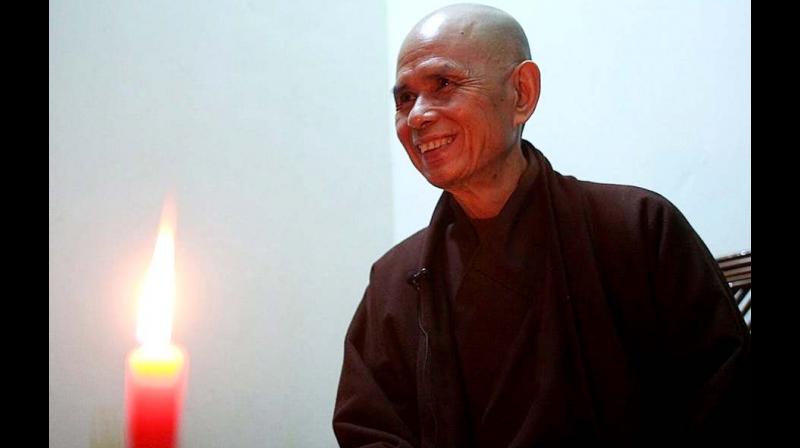Thich Nhat Hanh prepares for his final journey

Huế (Vietnam): Thich Nhat Hanh, the monk who popularised mindfulness in the West, has returned home to Vietnam to enjoy the rest of his life. Devotees from many parts of the world are visiting the ailing 92-year-old, who has retired to a Buddhist temple outside Huế.
This thoughtful and accepting approach to his own failing health seems fitting for the popular Buddhist teacher, whose followers include a thousand Buddhist communities around the world and millions more who have read his books. For everyone, his teachings encourage being present in the moment.
In the 1960s, Thich Nhat Hanh played an active role promoting peace during the years of war in Vietnam. Hanh was in his mid-20s when he became active in efforts to revitalise Vietnamese Buddhism for peace efforts. Over the next few years, he set up a number of organisations based on Buddhist principles of non-violence and compassion.
His School of Youth and Social Service, a grassroots relief organisation, consisted of 10,000 volunteers and social workers offering aid to war-torn villages, rebuilding schools and establishing medical centres. He also established the Order of Interbeing, a community of monastics. In addition, he also founded a Buddhist university, a publishing house and a peace activist magazine as a way to spread the message of compassion.
In 1966, Thich Nhat Hanh travelled to the United States and Europe to appeal for peace in Vietnam. In lectures delivered across many cities, he compellingly described the war’s devastation, spoke of the Vietnamese people’s wish for peace and appealed to the US to cease its air offensive against Vietnam. During his years in the US, he met Martin Luther King Jr, who nominated him for the Nobel Peace Prize in 1967.
However, because of his peace work and refusal to choose sides in his country’s civil war, both the communist and non-communist governments banned him, forcing Thich Nhat Hanh to live in exile for over 40 years. During these years, the emphasis of his message shifted from the immediacy of the Vietnam War to being present in the moment, an idea that has come to be called “mindfulness.”
Thich Nhat Hanh first started teaching mindfulness in the mid-1970s. The main vehicle for his early teachings was his books. In “The Miracle of Mindfulness,” for example, Thich Nhat Hanh gave simple instructions on how to apply mindfulness to daily life. This book was translated into English for a global audience.
According to Hanh, people interested in practicing meditation didn’t need to spend days at a meditation retreat or find a teacher. His teachings emphasised that mindfulness could be practiced anytime, even when doing routine chores. Even when doing the dishes, people could simply focus on the activity and be fully present. Peace, happiness, joy and true love, he said, could be found only in the moment. Hanh’s mindfulness practices don’t advocate disengagement with the world. Rather, in his view, the practice of mindfulness could lead one toward “compassionate action,” like practicing openness to other’s viewpoints and sharing material resources with those in need.
For Thich Nhat Hanh, however, mindfulness is not a means to a more productive day but a way of understanding “interbeing,” the connection and co-dependence of everyone and everything. In 2014, Thich Nhat Hanh suffered a stroke. Since then, he has been unable to speak or continue his teaching. In October of 2018 he expressed his wish, using gestures, to return to the temple in Vietnam where he was ordained as a young monk.
*The article was originally published by The Conversation Global Perspectives.

